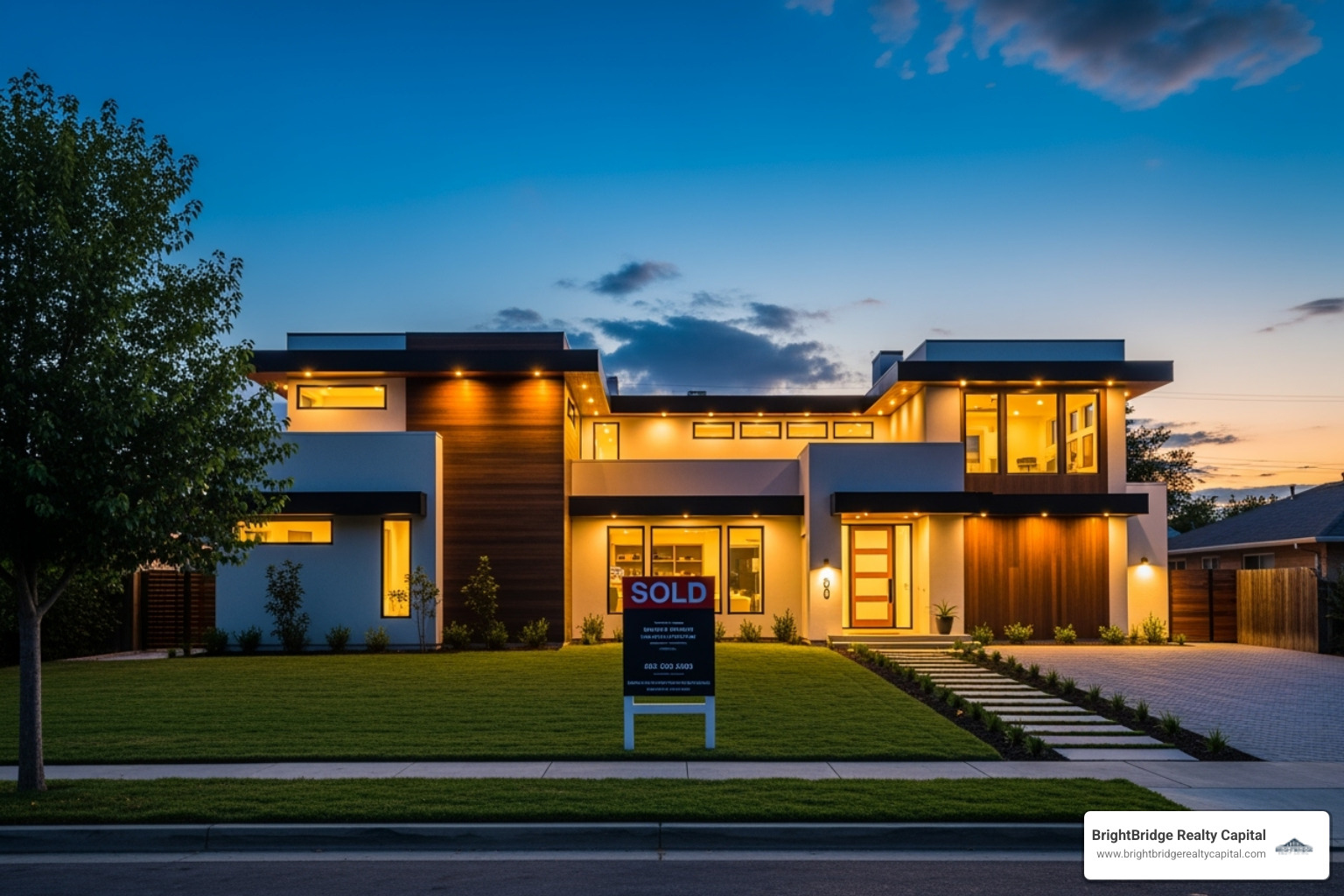Fix and Flip Market Insights: Where Are We Headed?

Fix and flip market is booming, changing the landscape of real estate investment. If you want to dive in, here's what you need to know right away:
- It's about buying a property, renovating it, and selling it fast for a profit.
- Success depends on choosing the right location and managing renovation costs efficiently.
- The fix and flip industry is growing due to a housing shortage and investor interest.
As more capital flows into this sector, fueled by RTL and DSCR loans, many part-time investors are seizing the chance to turn this side gig into a full-time venture.
The fix and flip market isn't just about houses—it's a dynamic blend of strategy, speed, and savvy. With cities like Fayetteville, Raleigh, and Phoenix offering promising opportunities, investors are strategically targeting markets with tight inventory and quick sales potential.
It's an exciting time to be in real estate, and there's plenty of room for growth if you're ready to take on the challenge.
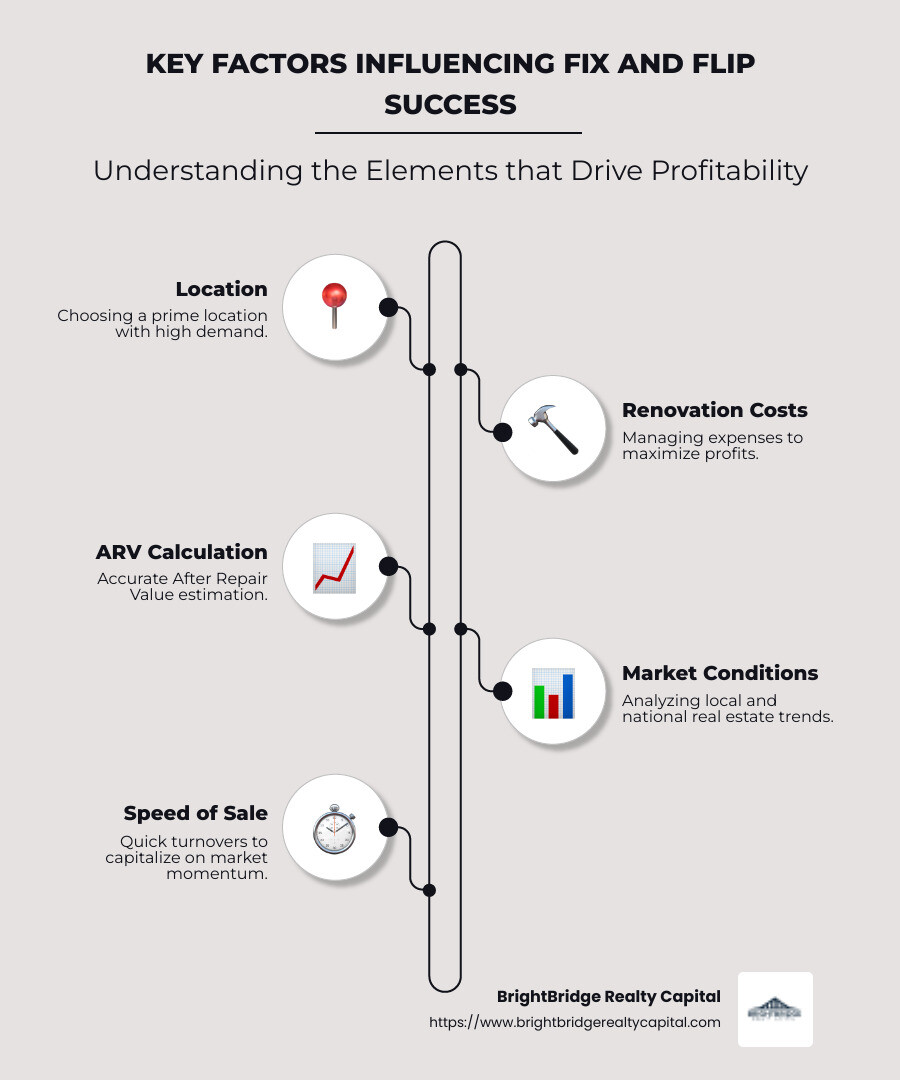
Simple guide to fix and flip market:
Understanding the Fix and Flip Market
The fix and flip market is all about buying properties, renovating them, and selling them for a profit. It's a world where timing, location, and strategy make all the difference.
Key Strategies for Success
Location is Key: The mantra "location, location, location" holds true in the fix and flip market. Successful investors target areas with strong buyer demand and quick sales. Cities like Raleigh and Phoenix are popular due to their rapid growth and economic potential.
Renovation Costs and ARV Spreads: Keeping renovation costs in check while maximizing the After Repair Value (ARV) is crucial. The goal is to add value through strategic updates without overspending. For example, spending $25,000 on renovations that increase the home's value by $45,000 can yield a $20,000 profit.
Quick Turnaround: Time is money in this business. Investors aim to minimize the time a property sits unsold to avoid carrying costs like mortgage payments and utilities. Markets with properties that sell quickly, often under 30 days, are ideal.
Risks and Challenges
Market Conditions: The real estate market can be unpredictable. Changes in interest rates or buyer demand can impact profits. As Rob Barber from ATTOM points out, "It's not as if profits have shot through the roof...far from it."
Carrying Costs: Every day a property remains unsold, costs accumulate. These include mortgage payments, property taxes, and insurance. Managing these costs is vital to maintaining profit margins.
Unexpected Delays: Renovations often come with surprises, like hidden structural issues or permit delays. These can extend timelines and increase costs, eating into potential profits.
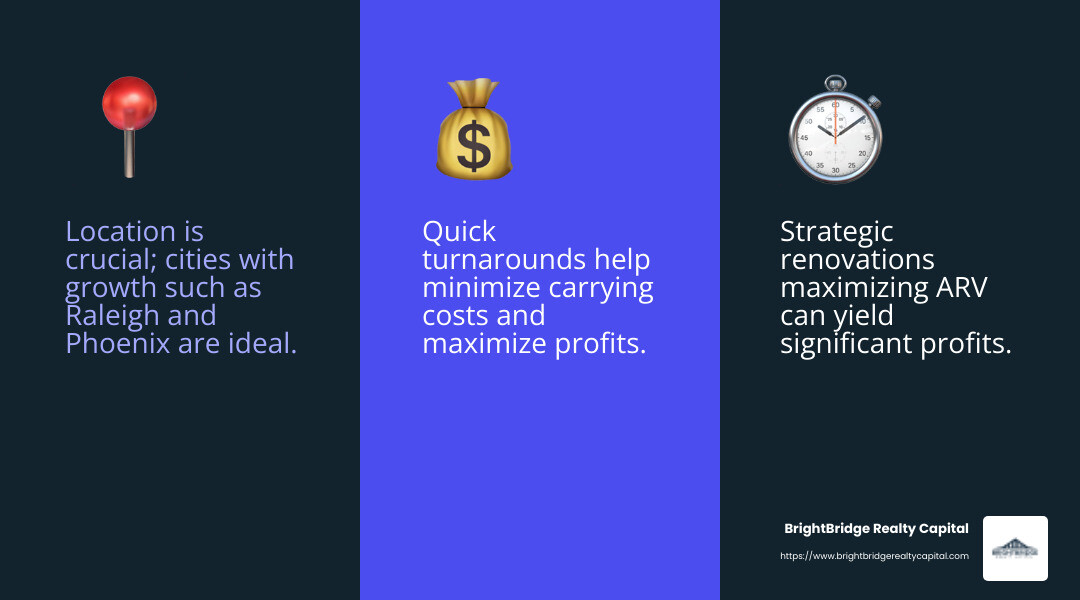
Navigating the fix and flip market requires a blend of strategy, foresight, and adaptability. Success hinges on understanding market dynamics, managing costs, and executing renovations efficiently. As we explore top markets like Fayetteville and Atlanta, these principles will guide investors toward profitable ventures.
Top Markets for Fix and Flip Investments in 2025
In 2025, several U.S. cities stand out as prime locations for fix and flip investments. Each city offers unique opportunities based on its economic conditions and housing market dynamics. Let’s dive into what makes Fayetteville, Raleigh, Phoenix, Atlanta, and Denver attractive for investors.
Fayetteville, Arkansas
Fayetteville tops the list due to its university-driven demand and robust economic growth. Home to the University of Arkansas, the city benefits from a steady influx of students and professionals. Major employers like Walmart and Tyson Foods bolster the local economy, creating a diverse and stable buyer pool.
The city's housing market offers affordable entry points, with property tax rates among the lowest in the nation at 0.61%. Renovation costs are also appealing, averaging 25-30% below national averages. With a streamlined permitting process, flippers can quickly turn around properties and capitalize on the area's 10% annual home value appreciation.
Raleigh, North Carolina
Raleigh's thriving tech sector and strong population influx make it a hotspot for fix and flip investments. The Research Triangle’s job growth attracts high-income buyers, creating a deep pool of potential property purchasers.
The city's housing market fundamentals are solid, with a 6.0% annual population growth and a median home price of $435,000. Renovation costs are 20% below national averages, allowing for healthy profit margins. Properties in neighborhoods like Southeast Raleigh and Garner offer significant ARV potential, with homes selling quickly due to high demand.
Phoenix, Arizona
Phoenix offers year-round construction opportunities and a diverse demographic mix. Known for its retiree demand and growing millennial population, the city presents multiple exit strategies for investors.
The median home price of $450,100 is relatively affordable compared to nearby California markets. Phoenix’s efficient permitting process and competitive renovation costs help investors minimize holding costs. Neighborhoods like Maryvale and South Phoenix are popular among flippers, with properties typically selling within 50 days.
Atlanta, Georgia
Atlanta’s diverse economy and extensive inventory of aging properties create exceptional opportunities for fix-and-flip investors. As a major business hub, the city attracts a steady stream of well-qualified buyers.
With a median home price of $420,000 and a 1.8% annual population growth rate, Atlanta offers accessible entry points and steady appreciation potential. The metro area’s labor costs are 15-20% below national averages, and quick permit processing supports efficient project timelines. Established suburbs with homes built in the 1970s-1990s offer numerous opportunities for value-add investments.
Denver, Colorado
Denver attracts high-income buyers and benefits from significant economic diversification. The city’s appeal lies in its tech-driven job growth and lifestyle advantages, including 300 days of sunshine and abundant outdoor activities.
While renovation costs can be steep, the market’s liquidity and average ROI of 27.5% make it an attractive option for investors. Denver’s housing market is bolstered by an influx of tech companies, providing a steady stream of potential buyers.
These cities represent some of the best opportunities in the fix and flip market for 2025. Each location offers unique advantages, from economic growth to diverse demographics, making them ideal for investors looking to capitalize on real estate opportunities.
Factors Influencing the Fix and Flip Market
Economic Conditions
Economic conditions play a crucial role in shaping the fix and flip market. Job growth is a primary driver, as it directly influences housing demand. Cities experiencing significant job growth, such as those with expanding tech sectors or major corporate relocations, often see increased demand for housing. For example, Denver's tech-driven job market has attracted high-income buyers, creating a robust environment for fix and flip investments.
Another key factor is housing demand. In cities like Raleigh, where population influx is strong, the demand for housing rises, making it an attractive market for flippers. A growing population often leads to increased competition for homes, driving up property values and creating opportunities for profitable flips.
Local Market Dynamics
Local market dynamics are equally important. Housing inventory levels can significantly impact the fix and flip market. Nationwide, inventory remains tight, but cities like Phoenix and Fayetteville offer unique opportunities due to their specific market conditions. In these areas, the balance between available properties and buyer demand can create favorable conditions for flippers.
Construction costs are a critical consideration as well. Markets where renovation costs are 15-25% below national averages, such as Fayetteville, allow investors to perform extensive improvements while maintaining healthy profit margins. This cost advantage is crucial for maximizing returns on investment.
Neighborhood trends also play a pivotal role. Identifying areas with potential for appreciation can make a significant difference. For example, neighborhoods in Atlanta with homes built in the 1970s-1990s often present the best opportunities for value-add renovations. These properties typically offer larger spreads between acquisition and ARV prices, allowing investors to capture significant profits.
Property values are another essential factor. In markets like Denver, where the average ROI is 27.5%, investors can expect attractive returns. However, it's important to consider the liquidity of the market and how quickly properties can be sold. Areas with quick average days on market, like Raleigh, provide a more favorable environment for flippers, helping to minimize holding costs and maximize profits.
Frequently Asked Questions about the Fix and Flip Market
What is the fix and flip strategy?
The fix and flip strategy is a real estate investment approach where investors purchase properties, renovate them, and then sell them for a profit. This strategy capitalizes on buying properties at a discount, often due to their poor condition, and adding value through renovations. The goal is to improve the property's market value swiftly, which allows for a profitable resale.
This method is distinct from traditional real estate investing, where properties are often bought and held for rental income. Instead, fix and flip investors aim for quick turnover to maximize profits and minimize holding costs.
How do you calculate ARV?
ARV, or After Repair Value, is a crucial metric in the fix and flip market. It represents the estimated market value of a property after renovations are complete. Calculating ARV involves:
Comparative Market Analysis (CMA): Look at recently sold properties in the area that are similar in size, condition, and features to your renovated property. These are often referred to as "comps."
Adjustments for Differences: Account for differences between your property and the comps. For example, if your property has a new kitchen that a comp doesn't, you might add value to your ARV.
Cost of Renovations: Consider the total cost of renovations when estimating ARV. The goal is to ensure that the increase in value exceeds the cost of improvements.
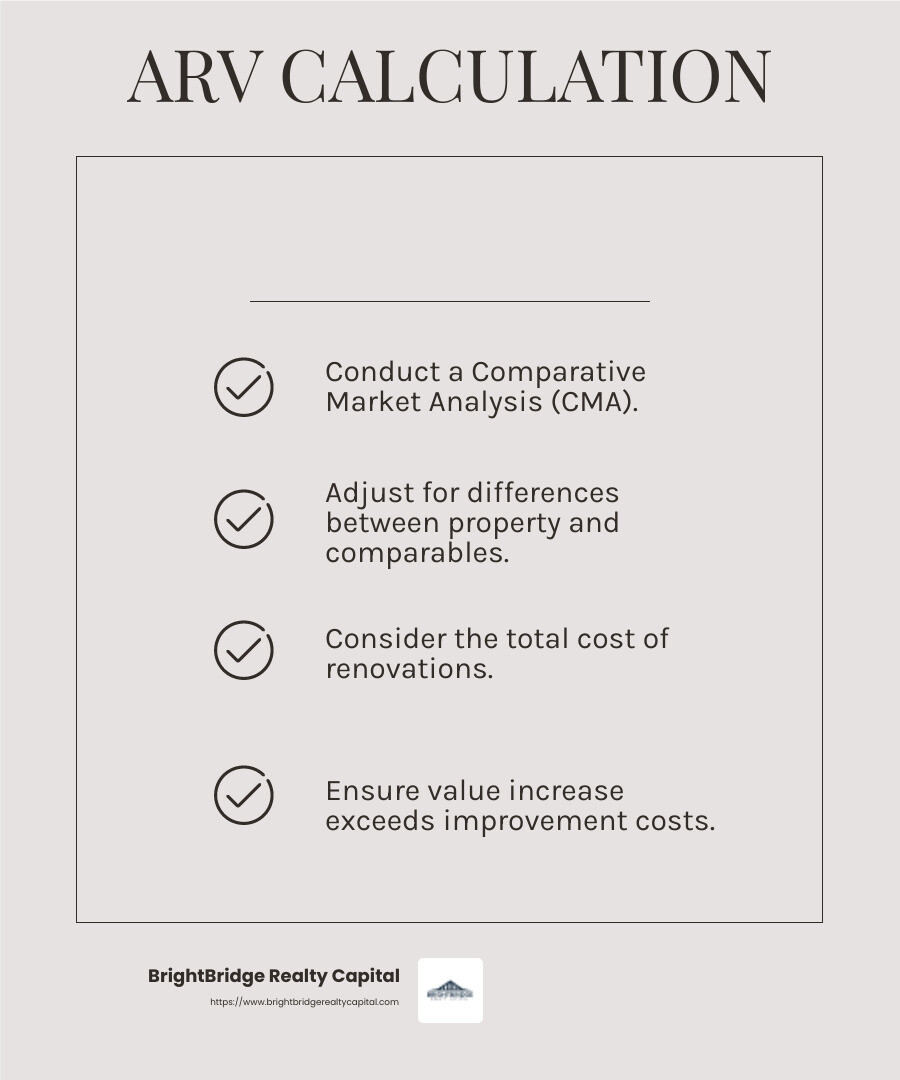
What are common mistakes in house flipping?
Flipping houses can be lucrative, but it's not without risks. Here are some common mistakes to avoid:
Underestimating Costs: Many novices fail to account for all expenses, including unexpected repairs, holding costs, and selling costs.
Overestimating Skills: Some flippers overestimate their renovation skills, leading to poor-quality work that doesn't increase the property's value as expected.
Poor Market Selection: Choosing a market with low demand or declining property values can lead to longer holding times and reduced profits.
Ignoring Local Regulations: Failing to understand local building codes and permit requirements can cause costly delays and fines.
Not Having a Contingency Plan: Market conditions can change, affecting your ability to sell quickly. Always have a backup plan to mitigate risks.
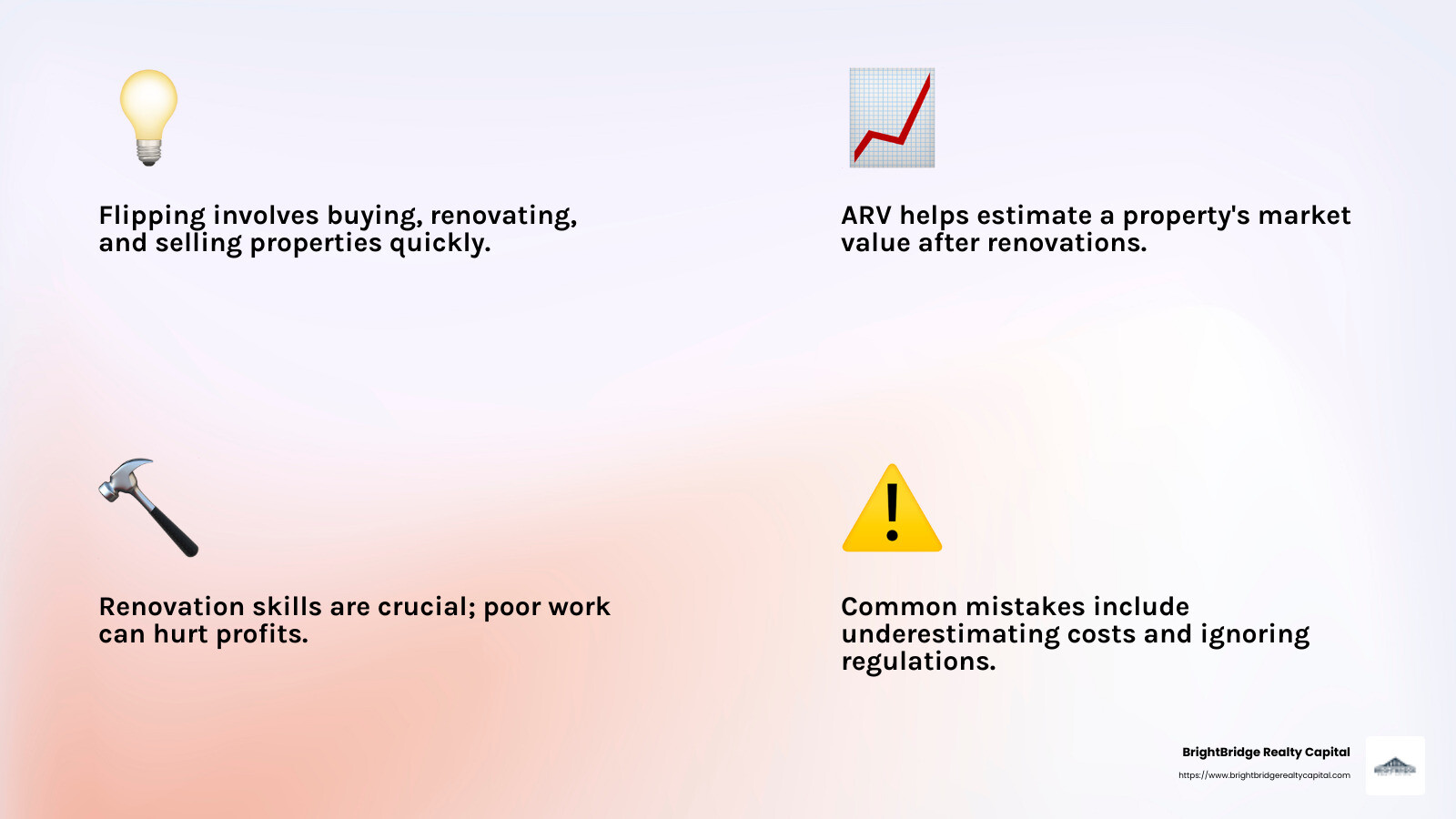
These insights are vital for anyone considering entering the fix and flip market. Understanding these elements can help investors make informed decisions and avoid pitfalls that could jeopardize their investments.
Conclusion
As we wrap up our exploration of the fix and flip market, one thing is clear: success in this field hinges on strategic planning and informed decision-making. This is where BrightBridge Realty Capital steps in as a valuable partner for real estate investors.
BrightBridge Realty Capital specializes in providing customized real estate financing solutions across the nation. Our focus is on delivering quick, flexible funding to investors looking to capitalize on the dynamic opportunities in the real estate market. With our fast closing process, often within a week, we ensure that you can seize opportunities without delay.
Our direct lending approach eliminates intermediaries, offering you competitive rates and a seamless experience. Whether you're flipping, building, or expanding your rental portfolio, we have the expertise to support your investment journey.
By choosing BrightBridge Realty Capital, you're not just getting a lender; you're gaining a partner committed to your success. Our team is dedicated to making the financing process as smooth and efficient as possible, so you can focus on what you do best—changing properties and achieving your investment goals.
Explore how we can assist you in your next project by visiting our website. Let us help you bridge the gap with smart real estate financing.
The fix and flip market is full of potential, but having the right financial partner can make all the difference. Choose BrightBridge Realty Capital for your real estate financing needs, and let's build success together.


